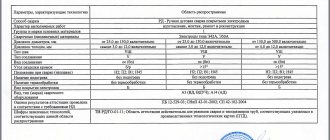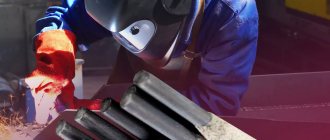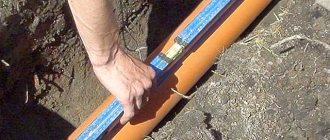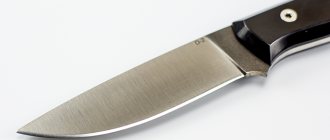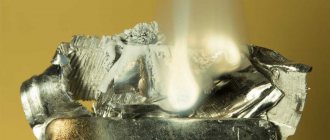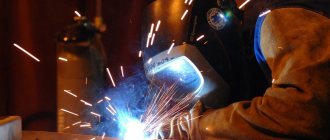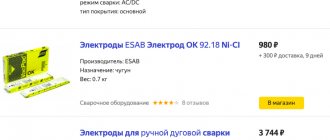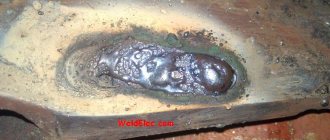Consumable materials for construction work are not among the main raw materials, but are closely related to them. As the name suggests, these include small tools and materials that are consumed or worn out in the process of completing a specific order, i.e., with a short service life. Further in the article it is indicated what applies to construction consumables.
Spare parts, abrasive and cutting tools
Each electric tool used in construction or repair requires its own equipment, which is a processing structural element, usually of a replaceable type. This includes drills, cutting wheels, grinding wheels, as well as lubricants and much more.
Consumables for construction tools are a significant cost element and the cause of endless disputes between the customer and the contractor. This situation is associated with a high degree of standardization of such components. With the same functionality, both the price and quality of products can have a serious difference. The choice is not always obvious, but if there is a large volume of work, it is worth giving preference to products from well-established manufacturers.
Construction equipment consumables can be classified according to the following criteria:
- Metalworking. These include drills, borings, metal cutters, cutting and sharpening wheels, grinding materials, hacksaw blades, and lubricants.
- Woodworking. Cutting discs for circular saws, jigsaw blades, wood drills.
- For processing stone, tiles and concrete. Diamond-coated discs, chisels and impact drills with pobedite tips.
In this entire list, only wood saws and drill-type components (with the exception of impact drills) can be restored by sharpening.
Classification of welding electrodes
Due to the fact that a huge mass of their varieties are now being produced, it is quite difficult to make a single classification, therefore, it is possible to derive the main parameters by which the differences are determined. It is worth highlighting separately:
- non-metallic, which includes only infusible electrodes made of coal or graphite;
- Non-consumable metals, such as itrolated, lanthanated, thoriated and the most common - tungsten;
- Consumable metal without coating, which often looks like an ordinary long wire, is now rarely used and mainly for welding in shielding gases, which compensate for the lack of coating;
- Metal melting with a coating is the most common type. This includes cast iron, steel, copper, bronze, aluminum, stainless and other welding electrodes.
Utility equipment and personal protective equipment
Hair and wire brushes, rags, containers for carrying and stirring bulk materials and garbage collection, brooms, stationery, gloves, goggles, respirators, etc.
All these little things add up to a hefty penny and cannot always be fully taken into account at the stage of drawing up a work estimate. Therefore, to simplify calculations, construction consumables are often allocated 3% of the cost of basic resources and included in the estimate as a general line without deciphering the nomenclature.
Welding electrode device
Despite the fact that the scope of application of welding electrodes may be different, their design is almost always the same. All of them consist of such basic elements as:
- Rod (metallic or non-metallic);
- Coverage (in rare cases may be absent);
- The contact end is uncoated.
The rod is the main part that provides the additional metal needed to connect the individual parts. When exposed to high temperatures, it melts, filling the capacity of the weld pool. The more its composition corresponds to the metal with which it is used, the higher the quality of the seam.
The coating creates a protective environment during welding. Thanks to this, unnecessary objects do not fall into the bath. The selection of coating also depends on the welding conditions and the material with which the work will be carried out, so the choice should be taken very responsibly.
The contact end is used to ignite the arc, which is why it is not coated. Small chipping of parts of the coating in this area is allowed, since this is one of the most vulnerable places.
Welding electrode device
Equipment for manual arc welding
The equipment required for manual arc welding consists of:
- from a power source, which can be either portable or stationary, depending on the type of work performed by the welder;
- from a cable with an electrical holder in which an electrode coated with a special coating is fixed;
- from a reverse grounding cable to connect the workpiece being welded to the power source.
Also, do not forget about additional equipment, such as: a protective mask, welder’s gloves, various devices for removing slag and other things necessary for the convenience of the specialist.
Electrode in construction
Any construction process requires the use of metal products. There are many methods and types of fastening metals. However, welding is considered the most effective and practical method. Electric arc welding can be considered the most commonly used technology. It involves the use of consumables such as welding electrodes. In addition to the construction industry, arc welding is also used in production.
Electrodes in packaging
Construction is the main area of application for electrodes. This could be the construction of a low-rise private house, or a large structure, shipbuilding, or the creation of a pipeline. Often, the use of this type of welding is associated with economic benefits and advantages. Using electrodes, you can bond different types of metals. Even metals such as cast iron, which have special processing and application requirements, can be fastened using electric arc welding.
Advantages and disadvantages of electrodes with basic coating
The main coating of the electrodes is designated by the letter “B” according to GOST 9466-75. The composition of the coating of electrodes with a basic coating consists of crushed components and a binder.
The crushed components include a mixture of magnesium and calcium carbonates, magnesite, dolomite, slag and some other components. Although electrodes with a basic coating are somewhat difficult to ignite, they have a high ductility and impact strength of the deposited metal.
These electrodes are used to weld critical structures where strength and reliability are needed. The disadvantages of the main electrodes include difficulty in igniting for beginners and increased sensitivity to moisture.
Disadvantages and advantages of welding
Among the advantages of using non-consumable electrodes for arc welding are:
- Minimal deformation in metals after welding due to the minimal heating zone.
- High quality connection.
- Speed of work completion.
- Low barrier to entry.
- Availability of a wide range of materials for welding work.
The disadvantages include:
- Shielding gas is blown out of the welding zone, which makes it difficult to work outdoors in windy weather.
- Before carrying out welding work, high-quality preparation of the metal is required.
- Parts must be cleaned when igniting outside the welding zone.
Purpose and types of refractory electrodes
used for welding work are :
- Tungsten;
- Coal;
- Graphite.
They have different purposes, but belong to the class of non-consumable electrodes.
Carbon rods are used for air-arc cutting of metal and eliminating defects on the surface of products. When using them, welding work is carried out at a current of 580 amperes. Among the coal rods, the following varieties can be distinguished:
- Round VDK (air-arc cutting) grades.
- Round grades SK (welding round).
- Flat grades VAR (air-arc cutting).
Cutting metal using an electric arc and removing the molten metal with a jet of compressed air is called air arc cutting .
Carbon rods have found their application for welding thin-walled structures made of non-ferrous metals and steel, and for welding defects on the surface of cast products.
Carbon rods can be used in the welding process using additives that are placed along the weld line or fed into the weld pool, or without them. They are often used for welding copper wires.
Graphite rods are used for welding aluminum and copper alloys, as well as non-ferrous metals . Compared to coal analogues, this type is more affordable in terms of price parameters. Compared to carbon electrodes, graphite rods withstand temperature better, cut better and have less wear.
Tungsten refractory rods are the most widely used type in home and industrial applications.
They are suitable for welding any metals, even with gas protection. For argon arc welding, tungsten electrodes are available with different compositions:
- Ytrited;
- Lanthanated;
- Thoriated - they are produced with the addition of Thorium, have a low degree of radioactivity, and therefore are not currently used in industry;
- Regular.
They have the form of a rod with a diameter of 1 to 4 millimeters. Due to its refractoriness, its melting temperature is much higher than the temperature of an electric arc, which allows it to weld any metals and alloys. But most often it is used for welding work with aluminum, stainless steel, copper and others.
What are consumables?
Consumables or consumables for office equipment are a group of items necessary for the functioning of various office equipment.
Among the wide range of all manufactured consumables, the following are in great demand:
- different types of cartridges - black and color;
- thermal paper, plain, high-density paper;
- matte and glossy photo paper for home photo printing;
- thermal film;
- bottled and portioned ink of various volumes;
- black and multi-colored coloring powders - toners;
- toner cartridges - which are a reusable removable unit filled with the desired color with a built-in special photodrum;
- kits to ensure uninterrupted ink supply for printer ink mechanisms - CISS;
- spare primary charge and magnetic shafts;
- dosing and cleaning blades;
- cleaning kits and products;
- photo drums;
- ready-made repair kits for quickly repairing breakdowns of office equipment.
Office supplies can be:
- original. They are produced by the same manufacturing company that produces office equipment;
- compatible, that is, not original, produced by other manufacturers, but working with this model of office equipment.
Original consumables
Consumables of original origin are characterized by trouble-free operation and higher cost. Their advantage is that they are produced by the same manufacturer as the office equipment brand in accordance with quality certificates, the reliability of the manufacturer, they are covered by a quality guarantee and warranty service.
What does the coating affect?
To obtain a high-quality seam, it is very important to choose the right electrode. The main role is played by the coating material, the types of which were discussed above. In order for a novice welder to understand the importance of choosing a coating, let’s consider its main functions and tasks:
- Arc stabilization. To increase the stability of the arc, substances with a low level of ionization are applied to the outer part of the products. This is necessary to saturate the arc with ions that stabilize the combustion process.
- Protection from atmospheric gases - when a welding arc is formed, the components of the surface coating during combustion create a protective cloud and form a slag layer, protecting the bath from exposure to oxygen. Slag reduces the cooling rate of the metal, which is necessary for the effective removal of gases and unnecessary impurities.
- Metal alloying - helps to improve the weld.
- Deoxidation - to remove oxygen from the seam, special compounds are used. These compounds are called deoxidizers, which react with oxygen to bind the metal.
- Bonding - to secure the surface layer to the metal rod, silicate glue is used, which helps stabilize the arc.
As you can see, a seemingly simple consumable for welding equipment called an electrode has a complex chemical composition, the quality of which determines the efficiency of welding work. In order for the metal connection to be of the highest quality and reliability, you need not only to learn how to operate welding machines, but also to choose electrodes for the work from proven and reliable suppliers.
